Myself, I would start by looking at the Delaunay triangulation of the point set:
http://en.wikipedia.org/wiki/Delaunay_triangulation
There appear to be plenty of resources there on efficient algorithms to build this - Fortune's algorithm, at O(n log n), for starters.
My intuition tells me that your widest path will be defined by one of the edges in this graph (Namely, it would run perpendicular to the edge, and its width would be equal to the length of the edge). How to sort the edges, check the candidates and identify the widest path remains. I like this question, and I'm going to keep thinking about it. :)
EDIT 1: My intuition fails me! A simple equilateral triangle is a counter-example: the widest path is shorter than any of the edges in the triangulation. Still thinking...
EDIT 2: So, we need a black-box algorithm which, given two points in the set, finds the widest path through the point set which is bounded by those two points. (Visualize two parallel lines running through the two points; rotate them in harmony with each other until there are no points between them). Let's call the runtime of this algorithm 'R'.
Given such an algorithm, we can do the following:
- Build the Delaunay triangulation of the point set : O(n log n)
- Sort the edges by width : O(n log n)
- Beginning with the largest edge and moving down, use the black box algorithm to determine the widest path involving those two points; storing it as X : O(nR))
- Stop when the edge being examined is shorter than the width of X.
Steps 1 and 2 are nice, but the O(nR) is kind of scary. If R turns out to be O(n), that's already O(n^2) for the whole algorithm. The nice thing is that, for a general set of random points, we would expect that we wouldn't have to go through all the edges.

